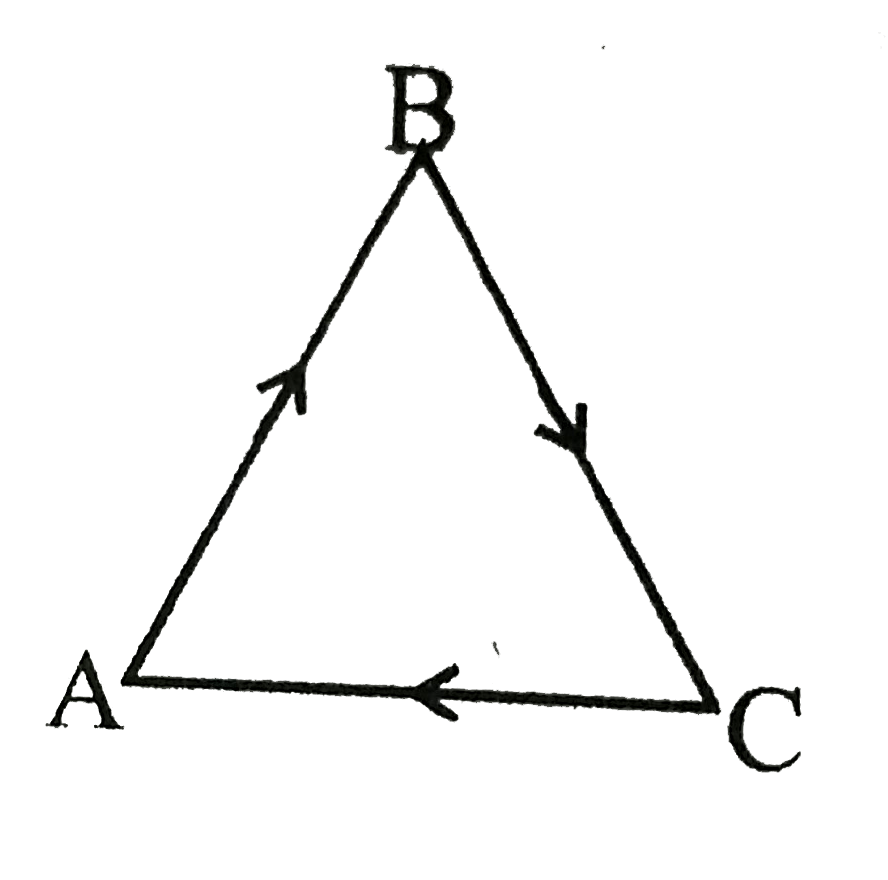In an isoceles triangle ABC, the acute angle BAC is 36∘ Point D lies on ¯¯¯¯¯¯AC such that ¯¯¯¯¯¯BD is the angle bisector of ∠ABC. Find ¯¯¯¯¯¯AB¯¯¯¯¯¯BC.
A)√5:2
B)√5−12
C)1+√52
D)none of these
The correct Answer is:C
To solve the problem, we need to find the ratio of the sides ABBC in the isosceles triangle ABC where ∠BAC=36∘ and BD is the angle bisector of ∠ABC.
1. Identify the Angles in Triangle ABC:
- Since triangle ABC is isosceles with AB=AC, we know that ∠ABC=∠ACB.
- Let ∠ABC=∠ACB=x.
- Using the triangle angle sum property, we have:
∠BAC+∠ABC+∠ACB=180∘
36∘+x+x=180∘
2x=180∘−36∘=144∘
x=72∘
- Therefore, ∠ABC=∠ACB=72∘.
Hint: Remember that the angles in a triangle sum up to 180∘.
2. Apply the Angle Bisector Theorem:
- Since BD is the angle bisector of ∠ABC, it divides ∠ABC into two equal parts:
∠ABD=∠DBC=72∘2=36∘
3. Use the Sine Rule:
- According to the sine rule in triangle ABC:
ABBC=sin(∠ACB)sin(∠BAC)
- Substituting the angles we found:
ABBC=sin(72∘)sin(36∘)
4. Calculate the Values:
- Using known values of sine:
- sin(72∘)=√5+14
- sin(36∘)=√5−14
- Therefore:
ABBC=√5+14√5−14=√5+1√5−1
5. Simplify the Ratio:
- To simplify √5+1√5−1, we can multiply the numerator and denominator by √5+1:
(√5+1)2(√5−1)(√5+1)=5+2√5+15−1=6+2√54=3+√52
6. Final Result:
- Thus, the ratio ABBC is:
ABBC=3+√52
Final Answer:
ABBC=3+√52
- Since triangle ABC is isosceles with AB=AC, we know that ∠ABC=∠ACB.
- Let ∠ABC=∠ACB=x.
- Using the triangle angle sum property, we have:
∠BAC+∠ABC+∠ACB=180∘
36∘+x+x=180∘
2x=180∘−36∘=144∘
x=72∘
- Therefore, ∠ABC=∠ACB=72∘.
- Since BD is the angle bisector of ∠ABC, it divides ∠ABC into two equal parts:
∠ABD=∠DBC=72∘2=36∘
- According to the sine rule in triangle ABC:
ABBC=sin(∠ACB)sin(∠BAC)
- Substituting the angles we found:
ABBC=sin(72∘)sin(36∘)
- Using known values of sine:
- sin(72∘)=√5+14
- sin(36∘)=√5−14
- Therefore:
ABBC=√5+14√5−14=√5+1√5−1
- To simplify √5+1√5−1, we can multiply the numerator and denominator by √5+1:
(√5+1)2(√5−1)(√5+1)=5+2√5+15−1=6+2√54=3+√52
- Thus, the ratio ABBC is:
ABBC=3+√52
ABBC=3+√52
Topper's Solved these Questions
Similar Questions
Knowledge Check
- Question 1 - Select One
In a △ABC,AC=BC, Point D lies on BC such that CD=AD=AB. Find ∠ACB.
AA)18∘BB)30∘CC)36∘DD)48∘ - Question 2 - Select One
In a triangle ABC, D is a point on BC such that AD is the internal bisector of ∠A. Let ∠B=2∠C and CD = AB. Then ∠A is
A18∘B36∘C54∘D72∘ - Question 3 - Select One
If G is the centroid of Δ ABC, then ¯¯¯¯¯¯CA+¯¯¯¯¯¯CB =
A3 ¯¯¯¯¯¯GCB3 ¯¯¯¯¯¯CGC3 ¯¯¯¯¯¯ABD3 ¯¯¯¯¯¯GA
In ABC, AB=AC, and the bisectors of angles B and C intersect at point O. Prove that BO=CO and the ray AO is the bisector of angle BAC
Since the angles opposite to equal sides are equal,
AB=AC
⇒∠C=∠B
⇒2∠B=2∠C
Since BO and CO are bisectors of ∠Band∠C, we also have
∠ABO=2∠B
∠ACO=2∠C
∠ABO=2∠B=2∠C=∠ACO.
Consider △BCO:∠OBC=∠OCB
BO=CO(Sides opposite to equal angles are equal)
Finally, consider triangles ABO and ACO.
BA=CA(given)
BO=CO(proved)
∠ABO=∠ACO (proved)
Hence, by S.A.S postulate△ABO≅△ACO
∠BAO=∠CAO
AObisects∠A.View SolutionIn a triangle ABC with side AB = AC and ∠BAC=20∘, D is a point on side AC and BC = AD. Find ∠DBC
View SolutionIn a ΔABC right angled at B, D is a point on AC such that BD is an angle bisector of B. If AD = 12 cm, CD = 16 cm then find the perimeter of triangle ABC.
View SolutionIn a △ABC. AB = 5 cm, AC = 7 cm. If AD is the angle bisector of angle A, then BD :CD is :
View SolutionIn a △ABC,AD is the angle bisector of ∠CAB and a median to BC. If AC=15 cm, find AB.
View Solution


